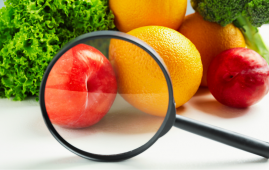

People in the U.S are at an increased risk of potential serious sports injuries in the celebratory rush to get back to competitive sport post-COVID-19 pandemic.
A leading orthopaedic surgeon is predicting an increase in upper limb injuries as people rush back to sports like tennis and golf.
Ali Noorani, pictured, Consultant Orthopaedic & Trauma Surgeon, Shoulder, Elbow & Upper Limb and Medical Director at Orthopaedic Specialists predicts that serious injuries will not be as a result of falling or breaking bones. Rather our bodies are no longer used to the intense sharp movements required in sport because a year of sedentary home-working has stopped the need for those movements.
He says; “It is great to get back to sport, but even those who have maintained their fitness throughout lockdown will not be prepared for the sort of movement competitive sport requires. Sport combines sudden, sharp, and quick movements to outwit your opponent and react defensively almost at a subconscious level.
These are powerful explosive movements in one direction, and then rapidly in the other direction. We call these ‘ballistic movements’ and these can cause painful injuries. Even someone who has been doing regular strength training is at risk. For instance, lifting weights is usually very controlled with a conscious slow movement.
There are three different groups of people who are at risk of injury in going hard at competitive sport:
- Celebratory sports participants – A large group of people who are not normally active at all will mark the end of lockdown by expressing their freedom and liberation by engaging in sporting activities once courts and courses reopen
- Temporarily inactive – Lots of people that usually would be actively playing sport throughout the year have done not much activity at all through lockdown. These people have potentially had a year out from their chosen sport
- Active – A third group has been active during lockdown engaging in home exercise regimes such as Peloton, running, and work-outs. However, even though this group is keeping fit they are not playing competitive or active sports and are therefore at risk of injury caused by ballistic movement
Noorani has seen a significant rise in cycling injuries as people took to the roads in increased numbers. Typical injuries include dislocation of the Acromioclavicular Joint Injury (ACJ), and collar bone injuries sustained by coming off bikes. People are injuring themselves because of bad posture at laptops, but also through home exercise regimes, however, the usual skiing and seasonal injuries have not occurred.
Noorani recommends six things people should remember to prepare for ballistic intense movement in sport and reduce your risk of injury:
Warm up, warm down and stretching
If you do any sport or a gym work-out then you put strain on your body. If you don’t cool down or stretch then you will not be adequately preparing your body or allowing time for it to recover. Warming up and down is as important as the activity itself. From a physiology perspective our bodies are always building tissue and breaking it down simultaneously, it is a finely balanced state.
Allow time (i.e. rest) for the collagen to build back up. During exercise there is swelling in your legs and muscles. Stretching is an important part of recovery (and warm up and down). Stretching may sound basic but it is crucial to ensure that you don’t get injuries. If you fail to stretch you may get pain and DOMs (delayed onset muscle soreness) one or two days after exercise and will not recover properly. Your muscles remain elastic after you have exercised and stretching acts as a massage for the body.
Grip
In tennis and golf (or any ball sports using a club or bat) people will not be used to gripping and heavy hitting. The risk here is a long term issue like Lateral epicondylitis which results from breakdown of collagen ( the essential protein in tendons and muscles) brought on by repetitive strain slowly over time.
You may not notice a classic event injury but start to feel pain. The tendons become worn over time, stretching, wearing down and eventually tearing so it’s an overload and repetition injury. Warming down acts like a massage for these micro-tears and allows the body to repair after each session.
Be aware of your power
In shoulders people tend to get aged related injuries. We expect to see more of the superior labrum anterior and posterior (SLAP) tear in younger people. This is where high impact powerful serves, and volleys, rip the bicep tendon attaching to the top of the socket.
It’s because of the repetitive sheer amount of force and can result in a painful tear. In older tennis players the danger is the rotator cuff muscles; the muscles used in arm rotation which are not used in many other movements. Be aware of the rotating action of swinging a tennis racquet and exercise those muscles
Introduce a rotator cuff and elbow exercise plan
Professional players will have a daily routine which strengthens those muscle in the upper body responsible for ballistic movement. A simple daily exercise routine should be followed especially for tennis players and golfers
Boost vitamins C and D and Magnesium
Vitamins C and D and Magnesium are important for tendon health so please ensure that you are getting enough from your diet, and add a good high dose supplement if you need it. If you have deficiencies in either C or D and Magnesium you are more likely to have injuries.
Modify and stand up!
Prepare your body by breaking the routine of homeworking by standing up at your desk. A simple but highly effective change that can mitigate many of the issues cause by working at a laptop. Noorani says; “When you work on a laptop you are very much hunched forward and leaning into a laptop which produces stress in back and shoulders.
You close up leading to pain in rotator cuff.” Issues with hands and wrists have also increased because mouse use has decreased. Before it gets bad enough to require expert input please modify your work station. You should have a proper desk with a bigger screen at eye-level. Standing is a lot less bad for the back so consider a standing desk to correct core and posture issues. Use a good mouse!
more recommended stories
 Safer Allogeneic Stem Cell Transplants with Treg Therapy
Safer Allogeneic Stem Cell Transplants with Treg TherapyA new preclinical study from the.
 Autoimmune Disorders: ADA2 as a Therapeutic Target
Autoimmune Disorders: ADA2 as a Therapeutic TargetAdenosine deaminase 2 (ADA2) has emerged.
 Kaempferol: A Breakthrough in Allergy Management
Kaempferol: A Breakthrough in Allergy ManagementKaempferol, a dietary flavonoid found in.
 Early Milk Cereal Drinks May Spur Infant Weight Gain
Early Milk Cereal Drinks May Spur Infant Weight GainNew research published in Acta Paediatrica.
 TaVNS: A Breakthrough for Chronic Insomnia Treatment
TaVNS: A Breakthrough for Chronic Insomnia TreatmentA recent study conducted by the.
 First-of-Its-Kind Gene-Edited Pig Kidney: Towana’s New Life
First-of-Its-Kind Gene-Edited Pig Kidney: Towana’s New LifeSurgeons at NYU Langone Health have.
 Just-in-Time Training Improves Success & Patient Safety
Just-in-Time Training Improves Success & Patient SafetyA study published in The BMJ.
 ChatGPT Excels in Medical Summaries, Lacks Field-Specific Relevance
ChatGPT Excels in Medical Summaries, Lacks Field-Specific RelevanceIn a recent study published in.
 Study finds automated decision minimizes high-risk medicine combinations in ICU patients
Study finds automated decision minimizes high-risk medicine combinations in ICU patientsA multicenter study coordinated by Amsterdam.
 Study Discovers Connection Between Omicron Infection and Brain Structure Changes in Men
Study Discovers Connection Between Omicron Infection and Brain Structure Changes in MenA recent study in the JAMA.

Leave a Comment